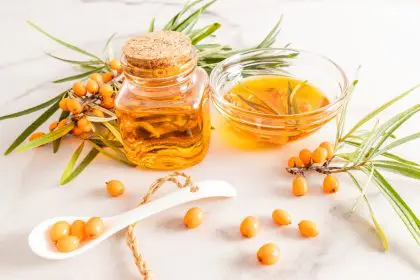Bentonite clay has been used for thousands of years by indigenous cultures for healing and purification, but it’s experiencing a major revival as people seek natural alternatives to expensive detox programs and synthetic wellness products. This volcanic ash-derived clay possesses unique electrical properties that allow it to bind toxins and impurities, making it one of the few detox trends with actual scientific backing.
Unlike many modern detox fads that rely on restrictive diets or unproven supplements, bentonite clay works through a well-understood mechanism that doesn’t require dramatic lifestyle changes or questionable ingredients to be effective.
Electrical charge attracts toxins like a magnet
Bentonite clay carries a strong negative electrical charge that attracts positively charged toxins, heavy metals, and impurities throughout the digestive system. When mixed with water, the clay swells and creates a gel-like substance that can bind to harmful substances and carry them out of the body through normal elimination.
This electromagnetic attraction is what sets bentonite clay apart from other detox methods that rely on harsh laxatives or diuretics to force elimination. The clay works gently by naturally attracting and binding unwanted substances rather than forcing the body to purge everything indiscriminately.
The binding capacity of bentonite clay has been demonstrated in laboratory settings where it successfully removes heavy metals, pesticide residues, and other environmental toxins from water and biological systems. This scientific foundation provides credibility that many trendy detox methods lack.
Digestive benefits extend beyond simple detox
Regular use of bentonite clay can help improve digestive function by removing built-up waste and toxins that may interfere with nutrient absorption and intestinal health. The clay’s gentle action helps cleanse intestinal walls without the harsh effects of aggressive colon cleanses.
Bentonite clay may also help balance gut bacteria by removing harmful substances that feed pathogenic microorganisms while creating a more favorable environment for beneficial bacteria. This prebiotic-like effect supports overall digestive health beyond simple detoxification.
The clay’s ability to absorb excess acids and gas can provide relief from digestive discomfort while supporting the natural healing processes of inflamed or irritated digestive tissues. This soothing effect makes it useful for people with sensitive stomachs who can’t tolerate harsh detox methods.
Skin applications provide external detoxification
Bentonite clay masks can draw impurities from pores and absorb excess oil, making them effective for acne-prone skin and clogged pores that don’t respond well to conventional treatments. The clay’s drawing action helps remove deep-seated impurities that surface cleansers can’t reach.
The anti-inflammatory properties of bentonite clay can help calm irritated skin while the mineral content provides nutrients that support skin healing and regeneration. This dual action makes clay masks more beneficial than simple pore strips or harsh exfoliants.
Regular use of bentonite clay masks can help improve skin texture and reduce the appearance of enlarged pores by keeping them clear of accumulated oil and debris. The gentle nature of clay treatments makes them suitable for regular use without causing irritation or over-drying.
Heavy metal removal addresses modern toxin exposure
Environmental exposure to heavy metals from air pollution, contaminated water, and processed foods creates a toxin burden that the body struggles to eliminate naturally. Bentonite clay’s proven ability to bind heavy metals like lead, mercury, and cadmium makes it particularly relevant for modern detox needs.
Unlike chelation therapy, which requires medical supervision and can have side effects, bentonite clay provides a gentle method for supporting the body’s natural detoxification processes. The clay works systemically to reduce overall toxin load without depleting essential minerals when used appropriately.
The accumulation of heavy metals in tissues can contribute to fatigue, brain fog, and various health issues that people often don’t connect to environmental toxin exposure. Regular clay detox protocols may help address these subtle but significant health impacts.
Proper usage ensures safety and effectiveness
Start with small amounts of bentonite clay – typically 1 teaspoon mixed with water – and gradually increase as your body adjusts to the detoxification process. Taking too much initially can cause digestive discomfort or constipation as toxins are mobilized faster than they can be eliminated.
Always use non-metal containers and utensils when preparing bentonite clay, as metal can interfere with the clay’s electrical properties and reduce its effectiveness. Glass or plastic mixing bowls and wooden or plastic spoons work best for preparation.
Drink plenty of water when using bentonite clay internally to support the elimination process and prevent dehydration or constipation. The clay absorbs water as it works, so adequate hydration is essential for comfortable and effective detoxification.
Take bentonite clay away from meals and medications to avoid interfering with nutrient absorption or drug effectiveness. The clay’s binding properties can affect the absorption of both beneficial and harmful substances, so timing is important for optimal results.
Choose high-quality, food-grade bentonite clay from reputable sources to ensure purity and safety. Industrial-grade clays may contain impurities that make them unsuitable for internal use, so source quality matters significantly for detox applications.












